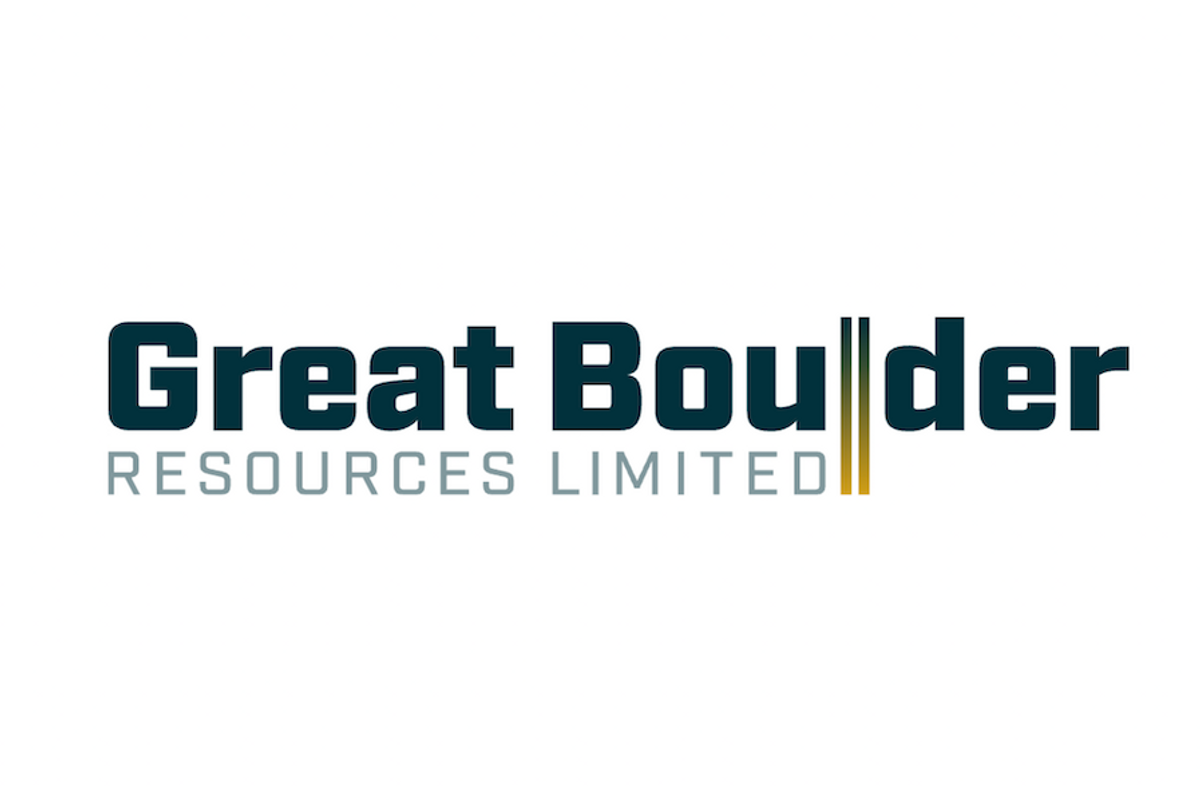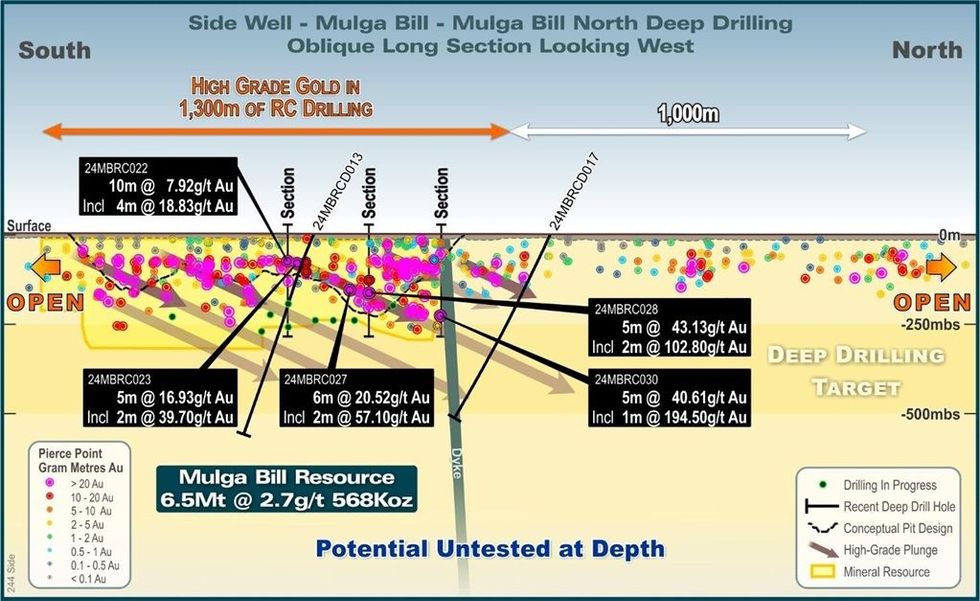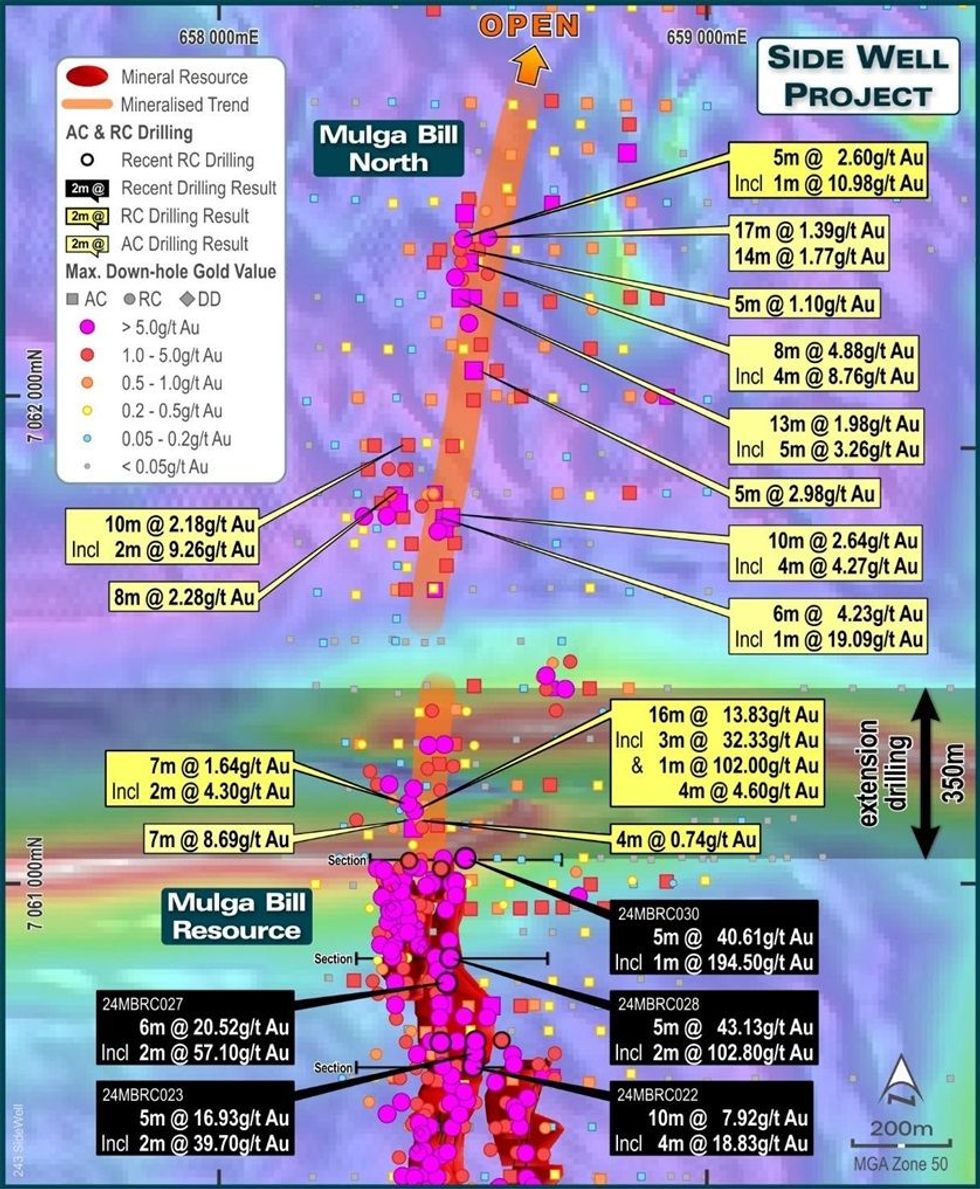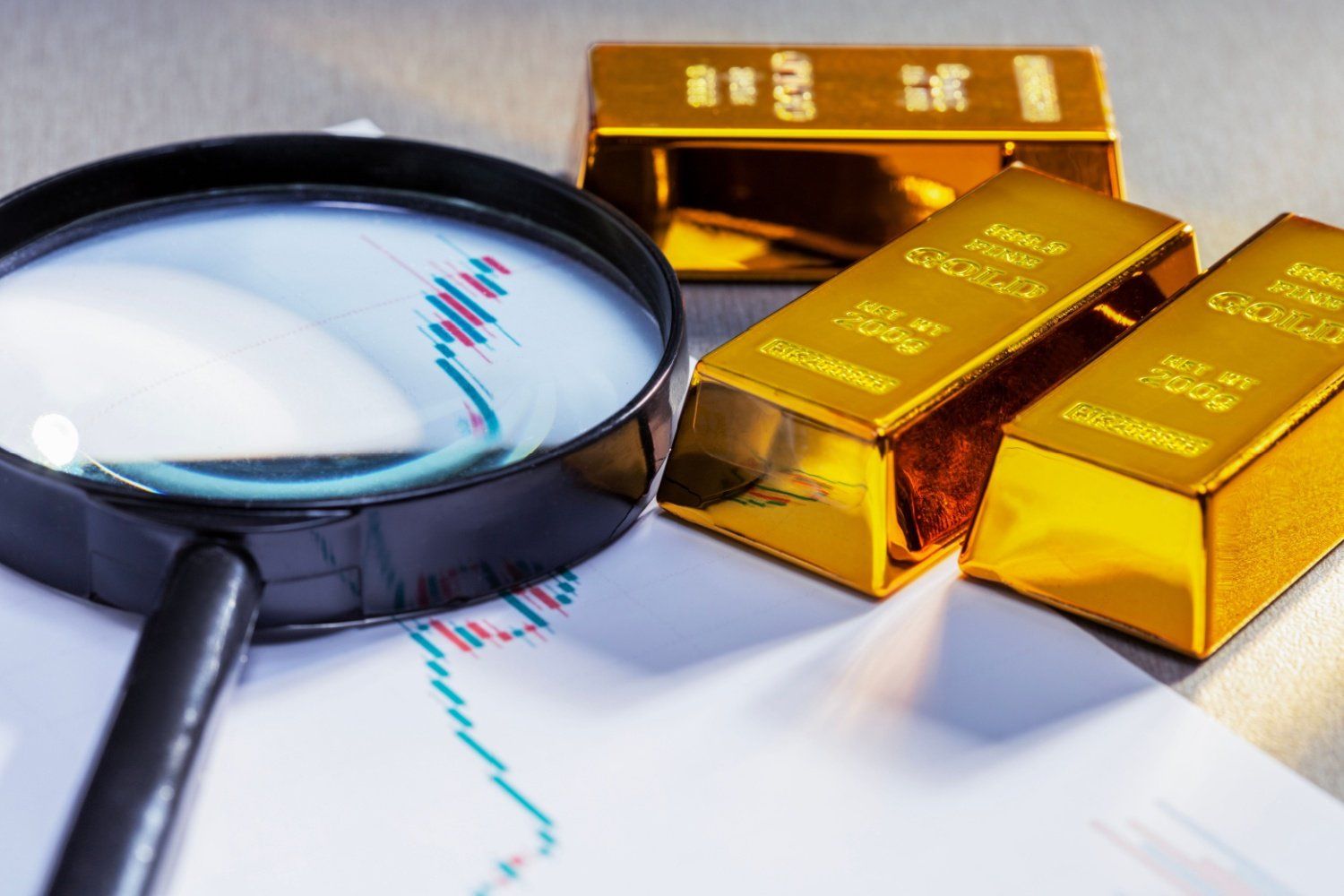
September 24, 2024
Multiple high-grade intersections with grades up to 194.50g/t Au from infill and extensional RC drilling at Mulga Bill
Great Boulder Resources (“Great Boulder” or the “Company”) (ASX: GBR) is pleased to provide an update on exploration at the Company’s flagship Side Well Gold Project (“Side Well”) near Meekatharra in Western Australia which hosts a Mineral Resource Estimate (“MRE”) of 668,000oz @ 2.8 g/t Au.
HIGHLIGHTS
- Reverse circulation (RC) at Mulga Bill has intersected more extremely high gold grades, extending the resource and adding thickness and grade to existing lodes
- Highlights include:
- 5m @ 43.13/t Au from 185m, including 2m @ 102.80/t Au from 186m in 24MBRC028
- 5m @ 40.61g/t Au from 256m, including 1m @ 194.50g/t Au from 258m in 24MBRC030
- 6m @ 20.52g/t Au from 179m, including 2m @ 57.10g/t Au from 179m in 24MBRC027
- 5m @ 16.93g/t Au from 91m, including 2m @ 39.70g/t Au from 92m in 24MBRC023
- Maiden AC drilling to commence imminently on the high priority Side Well South Prospect
Great Boulder’s Managing Director, Andrew Paterson commented:
“These are sensational new intersections at Mulga Bill. The holes were designed to add definition within areas of inferred resource and they have done so in emphatic style, with intersections that are both thicker and higher grade than previously estimated.”
“Equally impressive is the deep result in hole 24MBRC030 which is well outside the resource, down- dip and further north than previous drilling in that area.”
“After several rounds of drilling at Mulga Bill the high-grade lode positions fit our interpretation perfectly, which means we have very high confidence in the validity of this resource model. The drilling has added high-grade intersections up-dip from previous holes on several sections within the resource, which should add gold ounces closer to surface than the current estimate. This will be important for potential mine economics when we start scoping studies.”
Nine RC holes were drilled at Mulga Bill for a total of 1,587m. The program was designed to test poorly defined areas around the edges of the Mulga Bill high-grade vein positions as part of the process to upgrade less-drilled parts of the resource from inferred to indicated category. Highlights from the drilling include:
- 5m @ 43.13g/t Au from 185m, including 2m @ 102.80g/t Au from 186m in 24MBRC028.
- This sits within a Cervelo Lode vein, up-dip to the east from previous drilling.
- 5m @ 40.61g/t Au from 256m, including 1m @ 194.50g/t from 258m in 24MBRC030.
- This HGV lode was previously insufficiently drilled to be classified in the resource; it will now be added to the resource estimate and extends the Cervelo Lodes by approximately 30m to the north.
- 6m @ 20.52g/t Au from 179m, including 2m @ 57.10g/t Au from 179m in 24MBRC027.
- This sits within a Cervelo Lode vein, up-dip to the east from previous drilling.
- 5m @ 16.93g/t Au from 91m, including 2m @ 39.70g/t Au from 92m in 24MBRCD023.
- This sits within a Cervelo Lode vein, up-dip to the east from previous drilling. The intersection contains supergene mineralisation.
- 10m @ 7.92g/t Au from 82m, including 4m @ 18.83g/t Au from 85m in 24MBRC022.
- This sits within a Cervelo Lode vein, up-dip to the east from previous drilling. The intersection also contains supergene mineralisation.
- 2m @ 6.18g/t Au from 90m in 24MBRC025.

The mineralised wireframes at Mulga Bill will be updated and extended to incorporate the new intersections in preparation for a resource update which will be completed towards the end of the year.

Next Steps
The RC rig is currently drilling the final resource definition RC holes at Mulga Bill, after which reconnaissance AC drilling will commence on exciting new targets at Side Well South.
Click here for the full ASX Release
This article includes content from Great Boulder Resources licensed for the purpose of publishing on Investing News Australia. This article does not constitute financial product advice. It is your responsibility to perform proper due diligence before acting upon any information provided here. Please refer to our full disclaimer here.
GBR:AU
The Conversation (0)
59m
What Was the Highest Price for Gold?
Gold has long been considered a store of wealth, and the price of gold often makes its biggest gains during turbulent times as investors look for cover in this safe-haven asset.The 21st century has so far been heavily marked by episodes of economic and sociopolitical upheaval. Uncertainty has... Keep Reading...
3h
TomaGold Intercepts 6.68% ZnEq (1.57 g/t AuEq) over 48.05 Metres, including 39.03% ZnEq (9.15 g/t AuEq) over 2.90 Metres at Berrigan Mine and Identifies a Major Hydrothermal Footprint
TOMAGOLD CORPORATION (TSXV: LOT; OTCPK: TOGOF) (“TomaGold” or the “Company”) is very pleased to announce the initial assay results from drill holes TOM-25-009 and TOM-25-010 at its Berrigan Mine project located in the Chibougamau mining camp, in Québec. These are the first two of seven holes for... Keep Reading...
16h
Armory Mining Engages Castello Q Exploration for Ammo Antimony-Gold Work Program
(TheNewswire)Vancouver, B.C. TheNewswire - December 22, 2025 Armory Mining Corp. (CSE: ARMY) (OTC: RMRYF) (FRA: 2JS) (the "Company" or "Armory") a resource exploration company focused on the discovery and development of minerals critical to the energy, security and defense sectors, is pleased to... Keep Reading...
19 December
Armory Mining Announces Closing of Flow-Through Financing
(TheNewswire) THIS NEWS RELEASE IS NOT FOR DISTRIBUTION TO U.S. NEWSWIRE SERVICES OR FOR DISSEMINATION IN THE UNITED STATES Vancouver, B.C. December 19, 2025 TheNewswire - Armory Mining Corp. (CSE: ARMY) (OTC: RMRYF) (FRA: 2JS) (the "Company" or "Armory") a resource exploration company focused... Keep Reading...
18 December
More high grade gold intercepts at BMT3 in Boundiali
Aurum Resources (AUE:AU) has announced More high grade gold intercepts at BMT3 in BoundialiDownload the PDF here. Keep Reading...
Latest News
Interactive Chart
Latest Press Releases
Related News
TOP STOCKS
American Battery4.030.24
Aion Therapeutic0.10-0.01
Cybin Corp2.140.00




